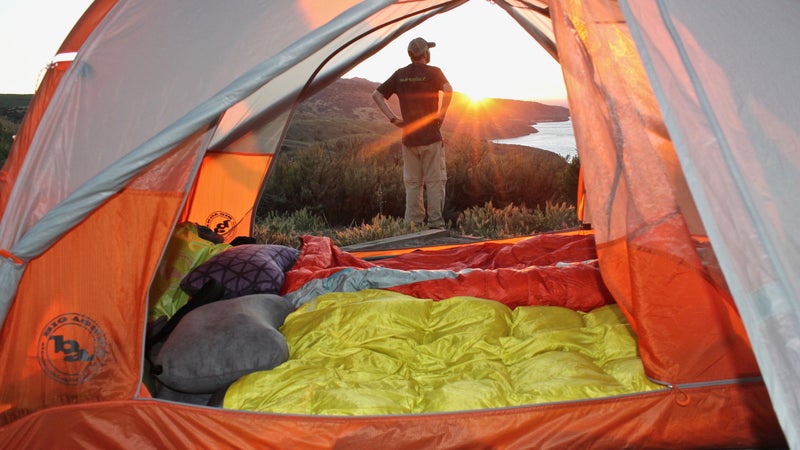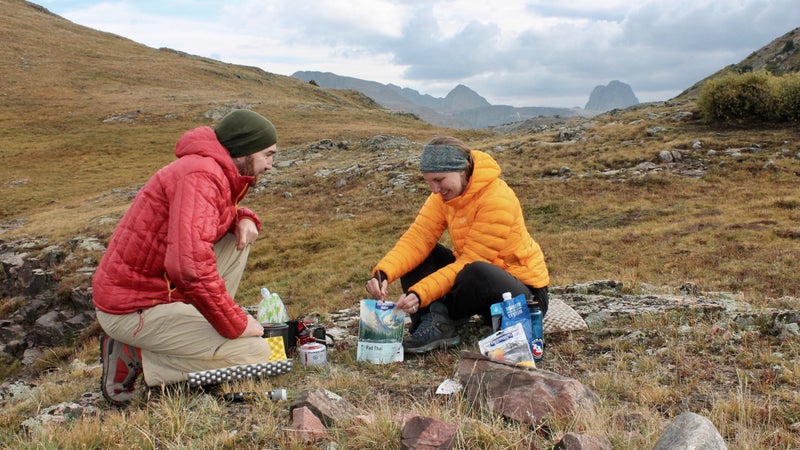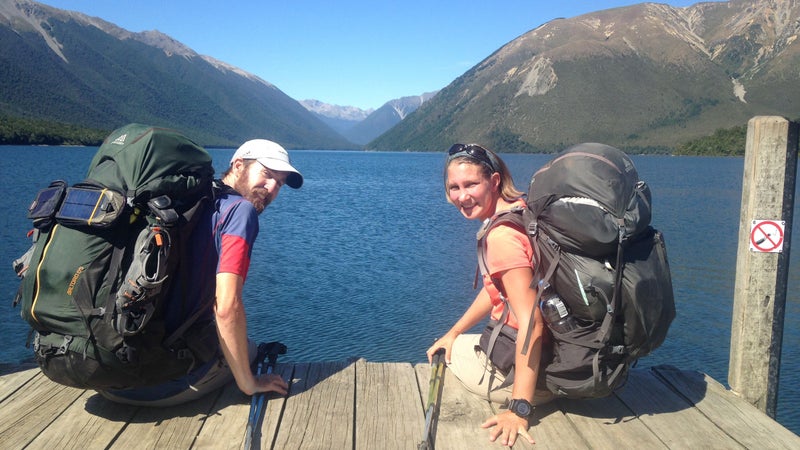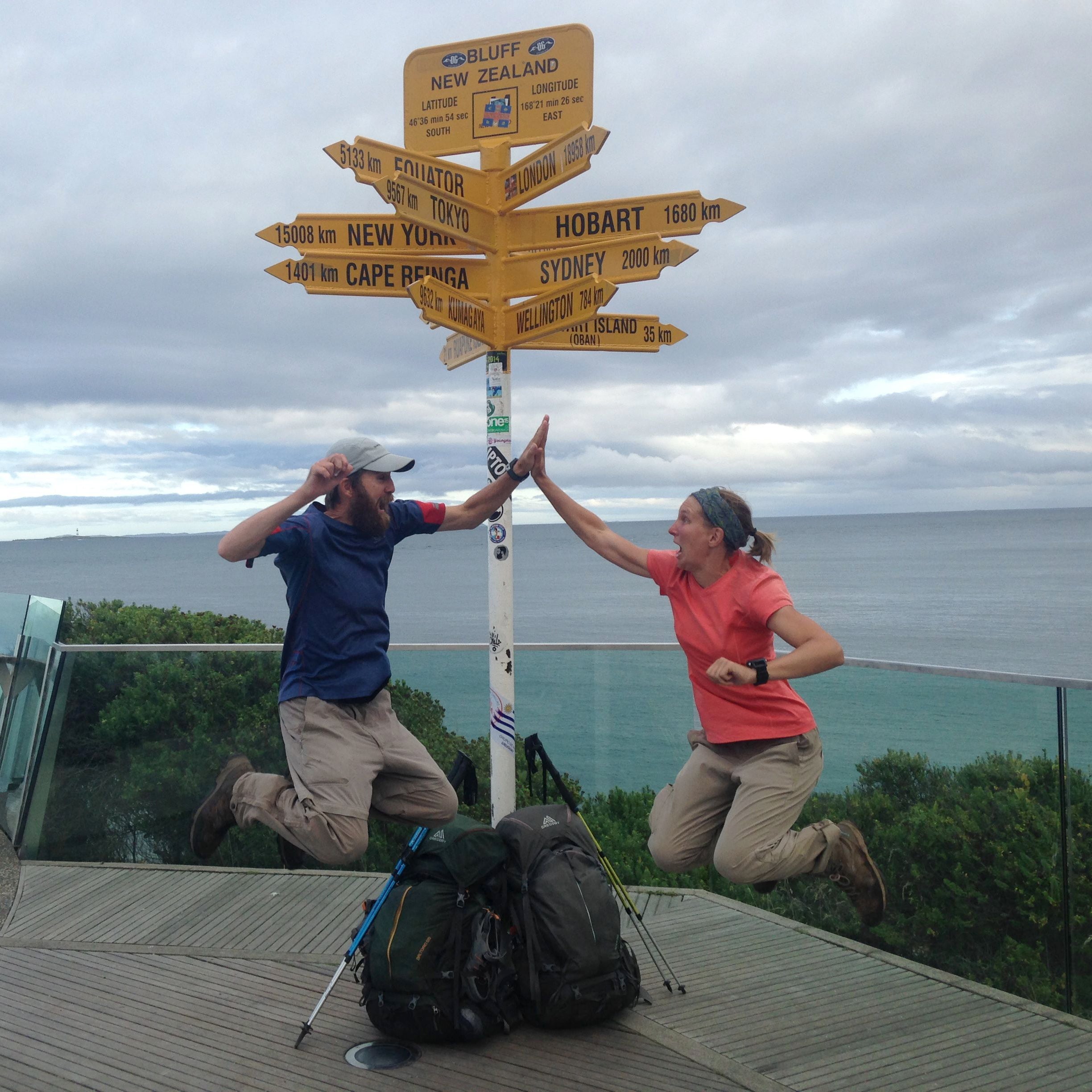In the new normal of inescapable household intimacy, the pettiest irritations can quickly escalate into intolerable aggravations. For some couples, this might be the ultimate test. But if you can survive quarantine together, you can certainly survive a long-distance hike.╠ř
Having backpacked 12,000-plus╠řcumulative miles on the Appalachian Trail together, as well as sections of the Pacific Crest Trail╠řand╠řNew ZealandÔÇÖs Te Ararora, we╠řcan say with confidence that the gear we chose for long treks╠řsaved our marriage. And after╠řyears of testing, weÔÇÖve found that certain gear picks change the way we interact with each other╠řand make it easier to coexist on the trail.╠ř
Shelter and Sleep Systems

When we decided to spend most of our fifth year together on an╠řAppalachian Trail thru-hike, we knew we had to╠řupgrade our shelter for more space. Our biggest complaint about our single-wall tent was that the╠řfront doorÔÇöthe only╠řdoorÔÇöforced us to clamber over each other and our stuff in the vestibule if we needed to get out. It also lacked ventilation, so if one of us accidentally hit the tent wall in the morning, it resulted in╠řan unwelcome shower of condensation.
Forking over the big bucks for our ╠řtent ($450) stung at the time, but it has become our stalwart gear champion years later. (WeÔÇÖve used multiple Copper Spur models as the line has evolved, and we╠řrecommend them all.)╠ř
This╠řtent is one of the reasons our marriage is still thriving after hundreds of backcountry nights. Besides PatriceÔÇÖs late-night bathroom trips being less disruptive thanks to two side doors, one of us brings more stuff than the other, so each of us╠řhaving our own vestibule is like having individual closets. The steep walls yield 40 inches of headroom, and the 29 square feet of usable╠řfloor space helps prevent bumping elbows and fraying nerves.
Respect for personal space (and an average of one shower per week over several months) is also the reason weÔÇÖve maintained individual sleep systems. We have both opted for sleeping pads (starting at $145), but because Patrice is a cold sleeper, she sticks with a 20-degree bag (starting at $370) and packs a ╠ř($63), just in case. Justin uses varying blankets and bags, such as the ($439), depending on the temperature.╠ř
Cookware and Food

Trail-food habits certainly run a wide gamut. We met a hiker in New Zealand who chomped on cold ramen in order to go stove-less. Another guy on the Appalachian Trail carried a four-pound jar of peanut butter╠řbecause he╠řdidnÔÇÖt realize╠řit would be easy to resupply. But we donÔÇÖt judge, because we have our own quirks, like eating cold oatmeal out of the packets to speed up our morning routine and spare us╠řdish duty.╠ř
Truthfully, we are lazy backpackers. And there are some╠řchoices we agree on, including╠řmeals and meal prep.╠řWeÔÇÖve done nothing more than boil two cups of water in our 1.4-liter pot from the╠ř ($65), using╠řour ($45), to put together╠řa dehydrated meal night after night.╠ř
The most creative we get is to save certain meals for special occasions. We had╠ř ($8) the Thanksgiving we spent on top of Guadalupe Peak in Texas and ate╠ř ($11) to celebrate╠řValentineÔÇÖs Day in New Zealand. We spice up birthdays with a dehydrated dessert, like the╠ř ($4).╠ř
Neither of us has a romantic notion of camp dinners over an open fireÔÇötoo much time and effort. Plus, we are grazers, so splitting a two-serving meal at night is usually enough. At the end of a 20-mile day, we like to equally divide camp chores and keep our routine low fuss. There arenÔÇÖt even any dishes, since we eat right out of the package with our long-handled ($4).
Suffice it to say╠řweÔÇÖve eaten more dehydrated dinners than we want to admit. We are╠řso obsessed with this routine that when we thru-hiked New ZealandÔÇÖs Te Araroa, we toted 76 dehydrated meals through customs for fear that we wouldnÔÇÖt be able to find reasonably priced meal varieties overseas. Admittedly, we felt silly when the agent spilled the meals across a metal table and said, ÔÇťYou do know we have food in New Zealand, ay?ÔÇŁ
Backpacks and Other Essentials

The same laziness applies to our water situation. JustinÔÇÖs water intake is more╠řcamel than╠řhuman, but Patrice has an unquenchable thirst and sweats when she looks at the sun. We match our opposite needs by using our ($22) to drink on the spot during╠řextended breaks╠řat the various water sources. In addition, Patrice always carries a ($40), while JustinÔÇÖs weight-saving strategy is to be more conservative, carrying maybe one liter on the hottest stretches.╠ř
YouÔÇÖve probably figured this out by now, but weÔÇÖve never claimed to be ultralight, so that goes for our packs as well.╠ř
We lug around our life on our backs with the and (womenÔÇÖs and menÔÇÖs, respectively, both $300). TheyÔÇÖre our╠řfavorites because of their numerous pockets and compartments. We prefer this organized system to╠řkeep an efficient camp life. While Justin tends to shoulder more of our joint gearÔÇöparticularly the tentÔÇöPatrice totes lunches and dinners, resulting in diminishing daily pack weight.
We fill our packs with our own snacks (gummies are a necessity) and personal gear. JustinÔÇÖs luxury list is admittedly longer than PatriceÔÇÖs, like his ($35), a spotting scope, and one too many extra layers (another reason having his own vestibule has been a relationship game changer). One luxury item we agree on: our favorite card game, ($8).╠ř
It took years of misadventures and failures to perfect our backpacking system.╠řIf only we could go back in time to╠řthat first backpacking trip together in 2003 to tell ourselves╠řthat sharing one foam pad is not worth the cost savings.╠ř


